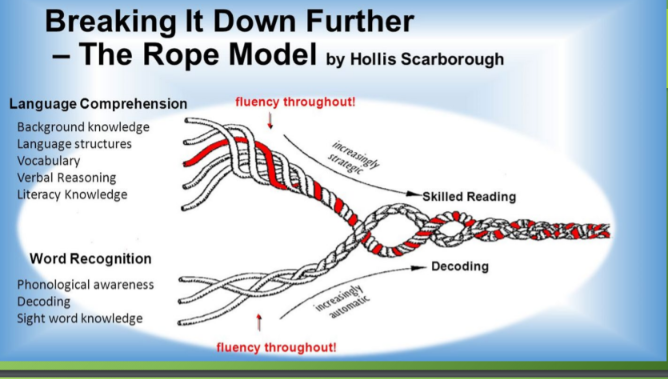 At our Spotlight Learning Series Virtual Conference, Early Literacy and the Whole Child, Brent Conway, Assistant Superintendent of Pentucket Regional School District in West Newbury, MA spoke about his success and learnings with building the early literacy systems needed to close the achievement gap. Here are Conway's recommendations using Tier 1 systems to improve literacy at a school or district level based on the science of reading. Register for the full recording on-demand and learn about our Spotlight Series to enhance your literacy and leadership knowledge and practice.
At our Spotlight Learning Series Virtual Conference, Early Literacy and the Whole Child, Brent Conway, Assistant Superintendent of Pentucket Regional School District in West Newbury, MA spoke about his success and learnings with building the early literacy systems needed to close the achievement gap. Here are Conway's recommendations using Tier 1 systems to improve literacy at a school or district level based on the science of reading. Register for the full recording on-demand and learn about our Spotlight Series to enhance your literacy and leadership knowledge and practice.
Driving Big Beliefs
Conway believes all students are general education students first. “If a vast majority of students are not reading well, there is a systemic breakdown. If there are high numbers of students reading below grade level, schools cannot intervene their way out of a Tier 1 problem.”
To achieve annual growth for all students, leadership must develop systems to ensure structured literacy is at the heart of teaching. This includes delivery of quality curriculum with a tiered level of intensity, frequency, and format of instruction. It takes time to drive new beliefs in a school system and establish a common understanding about what the research tells us to do. We have to evaluate what we are actually doing. Years of research and evidence conclude that models like the Simple View and *Scarborough's Reading Rope are powerful ways to capture all elements necessary in our curriculum and instruction for children to become proficient readers.
 Tier 1 System
Tier 1 System
Reading is not a natural process. Children must be taught how to read, given time to read, given background knowledge and vocabulary, and culturally-relevant books. Daily reading practice is also critical. Tier 1 systems goals are to ensure children who are the farthest behind receive direct, explicit instruction to have a solid base of foundational knowledge.
Leadership must acknowledge the need to develop a system that includes delivering the right evidence-based reading instruction and curriculum, professional development for teachers, screening tools, product protocols and progress monitoring to produce change. Conway's schools use DIBELS to determine if students are making progress toward reading goals and mastering curriculum objectives and state standards. “When you have systems and structures in place, you make the best use of the curriculum and instructional routines,” he says.
Focus on Reading Comprehension
Conway’s schools focus on reading comprehension to examine what is working and what is not. “Reading comprehension is an outcome, not an actual skill,” he says. “It relies on language, vocabulary, syntax grammar combined with decoding and frequency. Direct, systemic, explicit instruction and fluency is the greatest predictor of reading proficiency.”
Reading comprehension of text is best facilitated by teaching children a variety of techniques and systematic strategies to assist in recall of information, generating questions and summarizing information. “If a child's decoding skills or language comprehension skills are weak, reading outcomes are weak. If their fluency skills are weak, look at their word recognition skills. If their automaticity is weak, look at decoding skills. Our systems must be able to lead us to the point of breakdown and where our instruction needs to be directed for each child.”
Prioritize Early Literacy
Leadership must prioritize literacy in early childhood, even preK and develop a literacy plan that includes:
-
A leadership planning team
-
Core instruction
-
Intervention
-
Literacy assessment and use of data
-
Literacy professional development
-
Resources to support literacy
Tier 1 systems should be accessible by most students. Conway recommends using models like the Simple view and Reading Rope to capture all elements that should be included in curriculum and instruction. Encourage staff to share ownership of the system with a common goal to move as many children as possible up to grade-level reading. Base instruction on the science of reading. Build schedules based on data to catch children who are falling behind. Provide targeted skill practice and direct instruction based on every child’s needs. Make time for daily reading practice.
Take a deep dive into literacy with Brent Conway at two upcoming education leadership panels on February 23, and March 23, 2022. Call 800-221-1098.
Learning Ally works with leading experts in early childhood and whole child literacy, dyslexia, social and emotional learning, and evidence-based reading instruction to help educators unlock the learning potential of all students. Our “Perspectives on Whole Child Literacy” blog features exclusive content from literacy thought leaders who believe…“With the right mindset, leadership, evidence-based instruction, and social-emotional modeling, all children can become successful readers and achievers.
*Scarborough, H. S. (2001). Connecting early language and literacy to later reading (dis)abilities: Evidence, theory, and practice. In S. Neuman & D. Dickinson (Eds.), Handbook for research in early literacy (pp. 97–110). New York, NY: Guilford Press.